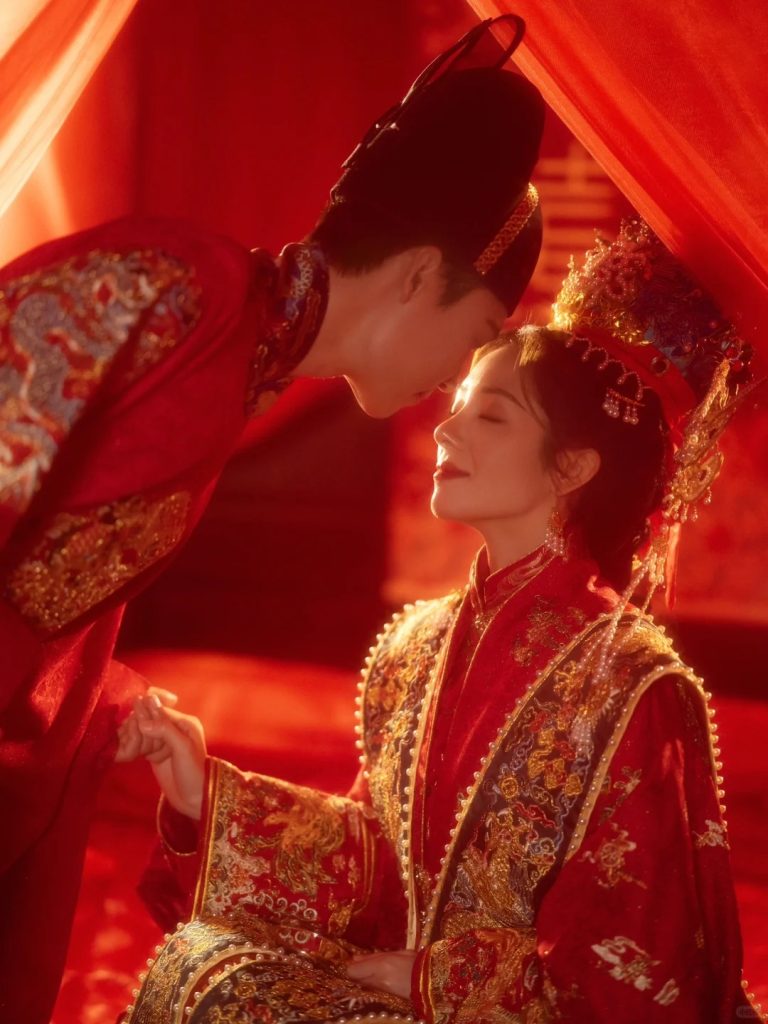Wei and Jin Dynasties: Graceful and Unrestrained—How the Seven Sages of the Bamboo Grove Influenced Hanfu Aesthetics

The Wei and Jin Dynasties were an era of profound individuality, where social upheaval and ideological liberation gave rise to a unique cultural atmosphere. During this period, clothing was no longer merely a symbol of status and ritual but also an important expression of personality and thought. Among the figures that left a lasting impact on Hanfu aesthetics, the Seven Sages of the Bamboo Grove stand out, shaping a style that embodies elegance, freedom, and detachment from worldly concerns.

I. The Ethos of the Wei and Jin Dynasties and the Transformation of Attire
The Wei and Jin era was marked by constant warfare and social unrest. The once-dominant Confucian ideology was challenged, leading to the rise of Daoism and Neo-Daoist thought, which emphasized personal liberation and natural elegance. This shift was clearly reflected in clothing trends:
1. Loose Robes and Flowing Sleeves: The Pursuit of Graceful Aesthetics
- Unlike the rigid dress codes of the Han Dynasty, Wei and Jin clothing became looser and more free-flowing, featuring wide robes and elongated sashes, creating an air of effortless grace.
- The use of soft and lightweight fabrics allowed garments to billow elegantly while walking, embodying the Daoist ideal of “emptiness and stillness.”
2. Subdued Elegance: A Departure from Extravagance
- Influenced by Daoist philosophy, scholars of the Wei and Jin Dynasties preferred subtle and natural tones, such as white, pale blue, and gray, avoiding excessive ornamentation.
- This shift from opulence to simplicity and refinement redefined nobility, setting a precedent for later dynasties where understated elegance became a mark of high status.
3. Changes in Hairstyles and Accessories
- The strict crown system of the Han Dynasty was relaxed, and men let their hair flow freely or loosely tied it up, signifying a break from rigid societal norms.
- Accessories were minimal—wooden hairpins and simple headscarves replaced elaborate gold ornaments, reinforcing the ideal of detachment from material desires.

II. The Seven Sages of the Bamboo Grove and Their Influence on Hanfu Aesthetics
The Seven Sages of the Bamboo Grove were a group of intellectuals and poets who rejected officialdom and worldly constraints. Their unrestrained lifestyle and unconventional attire played a crucial role in shaping the fashion of their era.
1. Aesthetic of Flowing Robes and Carefree Elegance
- The sages despised court formalities and opted for wide, flowing garments that embodied their ideals of freedom and rebellion against Confucian rigidity.
- Their robes featured loose sleeves and long draping hems, creating a silhouette that exuded effortless sophistication and ethereal detachment.
2. A Preference for Subdued Tones and Minimalism
- The Seven Sages favored simple, muted colors, often dressing in white, light gray, or soft blue, symbolizing their rejection of material excess.
- This trend gradually influenced the upper class, making understated elegance the new hallmark of sophistication.
3. Daoist and Neo-Daoist Influence on Clothing Philosophy
- Deeply influenced by Daoist ideals, the sages’ clothing reflected their pursuit of harmony with nature. Their robes were designed for comfort and ease, rather than strict adherence to formal codes.
- This aesthetic later influenced the Tang and Song Dynasties, as seen in the development of straight-cut robes and Taoist-inspired attire.

III. The Lasting Influence of Wei and Jin Aesthetics on Hanfu
The fashion trends of the Wei and Jin Dynasties did not fade with time. Instead, they laid the foundation for many later styles, influencing the evolution of Hanfu in several ways:
1. Establishing the Silhouette of Flowing Robes
- The preference for loose, elegant robes carried over into the Tang Dynasty, where wide-sleeved garments became even more pronounced.
- The scholar robes of the Song and Ming Dynasties also retained the influence of the Wei and Jin aesthetic, emphasizing simplicity and refinement.
2. The Enduring Prestige of Minimalist Elegance
- The Wei and Jin shift toward subtle colors and minimal ornamentation became deeply embedded in Chinese fashion culture, later reflected in Song Dynasty literati fashion and Ming Dynasty scholars’ attire.
3. The Birth of Individualized Fashion
- For the first time in Chinese history, personal expression became an important part of fashion, breaking away from strict ritual dress codes.
- This trend continued into the Tang Dynasty, where bold, diverse styles flourished, and later influenced Ming Dynasty scholars’ preference for practical yet refined garments.

The Wei and Jin Dynasties saw the transformation of Hanfu from a symbol of rigid hierarchy to an embodiment of philosophy and individuality. The Seven Sages of the Bamboo Grove epitomized this shift, inspiring loose, flowing, and elegantly simple attire that influenced generations to come.
Today, as Hanfu culture experiences a revival, the ethereal elegance of Wei and Jin fashion continues to captivate modern enthusiasts. The timeless appeal of wide-sleeved robes and subdued color palettes serves as a bridge between ancient ideals and contemporary aesthetics, proving that true elegance transcends time.





Responses